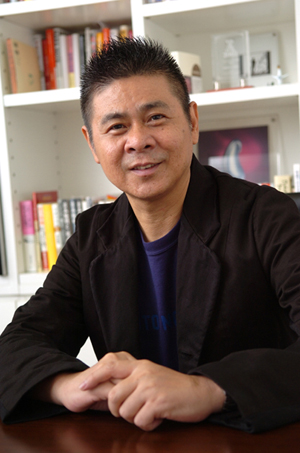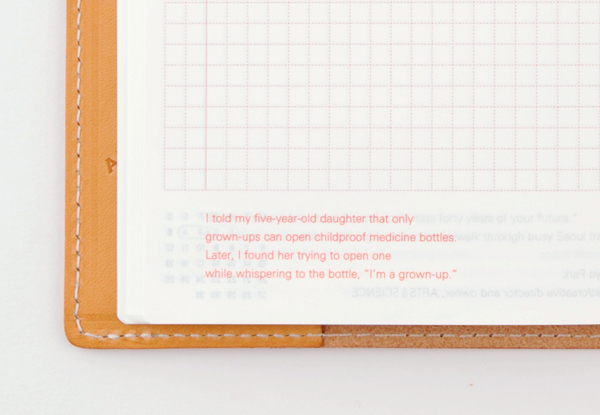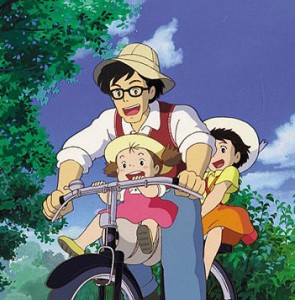Most Japanese people can quote Shigesatsu Itoi’s most well known lines, made famous because of their use in some of the country’s most memorable adverts. You may know the sound of his voice – he played Mei and Satsuki’s father in the Hayao Miyazaki’s My Neighbour Totoro – or you may have played the successful computer game he designed for Nintendo, “Earth Bound” (titled “Mother 2” in Japan).
Whether or not you’re familiar with his wide-ranging work, you should know that Shigesato Itoi is a prominent figure in Japan and an influential cultural icon.
It was back during the dynamic economic growth that characterized 1970s and 80s Japan that Itoi, now 63, rose to prominence after producing advert catchphrases that have remained deep-rooted in Japanese pop culture and are credited with establishing the profession of copywriter outside the advertising industry.
His most outstanding line is probably the successful 1983 catchphrase for Seibu department stores, which simply stated: “Delicious life.” In a way that hadn’t been particularly common in Japan, it conveyed the message that the department store offered way more beyond daily goods: it offered a lifestyle. Woody Allen even featured on the posters.
Multi-talented Itoi quickly spread his artistry into lyrics and essays, co-authoring a collection of short stories titled Yume de Aimashou (“Let’s meet in a dream”) with writer Haruki Murakami. Over the past 14 years, however, his activity has been focused on his news website, Hobo Nikkan Itoi Shinbun (Almost Daily Itoi News.) Itoi is a prolific writer, updating daily with artist interviews and essays on lifestyle.
The most popular item in Itoi’s growing collection of merchandise is the Hobonichi Techo Planner, which was launched in 2001.
Its creative versatility was an immediate hit and, over the years, the planner’s design has been refined and updated to meet the demands of its users. In a country that goes mad for stationery – visit any department store and see – it is the highest selling diary in Japan.
“When I was young, I would forget about so many things. I thought taking notes was un-cool, and forgetting about things meant they maybe weren’t important. Designing the planner was a chance to create something to help myself, to be an assistant to myself,” Itoi tells Weekender.
The planner offers, Itoi explains, an entire page with only graph lines for each day and leaves room to scribble down anything you wish to remember: appointments, a webpage layout, meals you ate, books you read, notes from friends and sketches, “The possibilities are endless and it’s a great place to record memories and daily experiences. You can save the planners after each year as keepsakes and create your own life novel.”
He also mentions the importance of jotting down handwritten notes in a world dominated by electronic technology. An old fashioned diary acts, for this writer, as a chic lifestyle accessory that I both enjoy and find makes me more productive.
In fact I enjoy the process of feeling productive a notebook gives me. And for Itoi, handwritten notes carry a deeper, more personal meaning than what we type into an electronic device; there is a kind of beauty and uniqueness attached to handwriting, as it shows personality traits. “It’s a bit like having a conversation with your own notebook,” adds Itoi, who hopes it can be an “intimate part of its user’s life.”
The Hobonichi Techo Planner has, since September, been available in an English after a unique collaboration with Sonya Park, the owner and creative director of the eclectic life-style brand, ARTS&SCIENCE.
Of Park, Itoi says, “I’ve watched her work as an artist and I thought she was creating good work. She understands traditional knowledge, but also has a modern philosophy and managed to blend both together to make the planner useful. She wanted to be more involved in the design, not only creating the cover but in the content as well”.
What I love about this planner is its simple yet sophisticated cover, which features the engraved Japanese characters for “techo” along with the ARTS&SCIENCE logo. The soft, lightweight leather has a texture that matures with use and inside, each page spread also features a distinctive quote that has been selected from the Hobonichi website.
A handy section in the back includes a glossary of useful Japanese words as well as a quirky miscellany that includes a guide to Japan’s national birds, a map of World Heritage sites across Japan and a plethora of cultural tidbits such as coffee making processes around the world.
Itoi is also using his creative skills to bring relief to the tsunami affected Tohoku region. Having set up a branch office in the region, he is organizing a variety of projects to help out the local communities, inviting people from across the country to pitch creative ideas and interact with the locals. Presidents of manufacturing and other companies are also introduced to the communities to exchange ideas and seek ways to combine their potentials, in order to re-build businesses.
His team is working with local women in Kessennuma, Miyagi, who are working towards establishing the town as a hub for high quality knits. “I put a lot of importance into crafts and the process of making things by hand,” Itoi explains, talking positively about all the projects he manages to juggle. Listening to him talk makes me look forward to seeing what the future will bring for the multi-talented man of the moment.
To find out more about Itoi’s work in Kessennuma, in Japanese, click here.
by Vivian Morelli
Main image: sebra / Shutterstock.com












